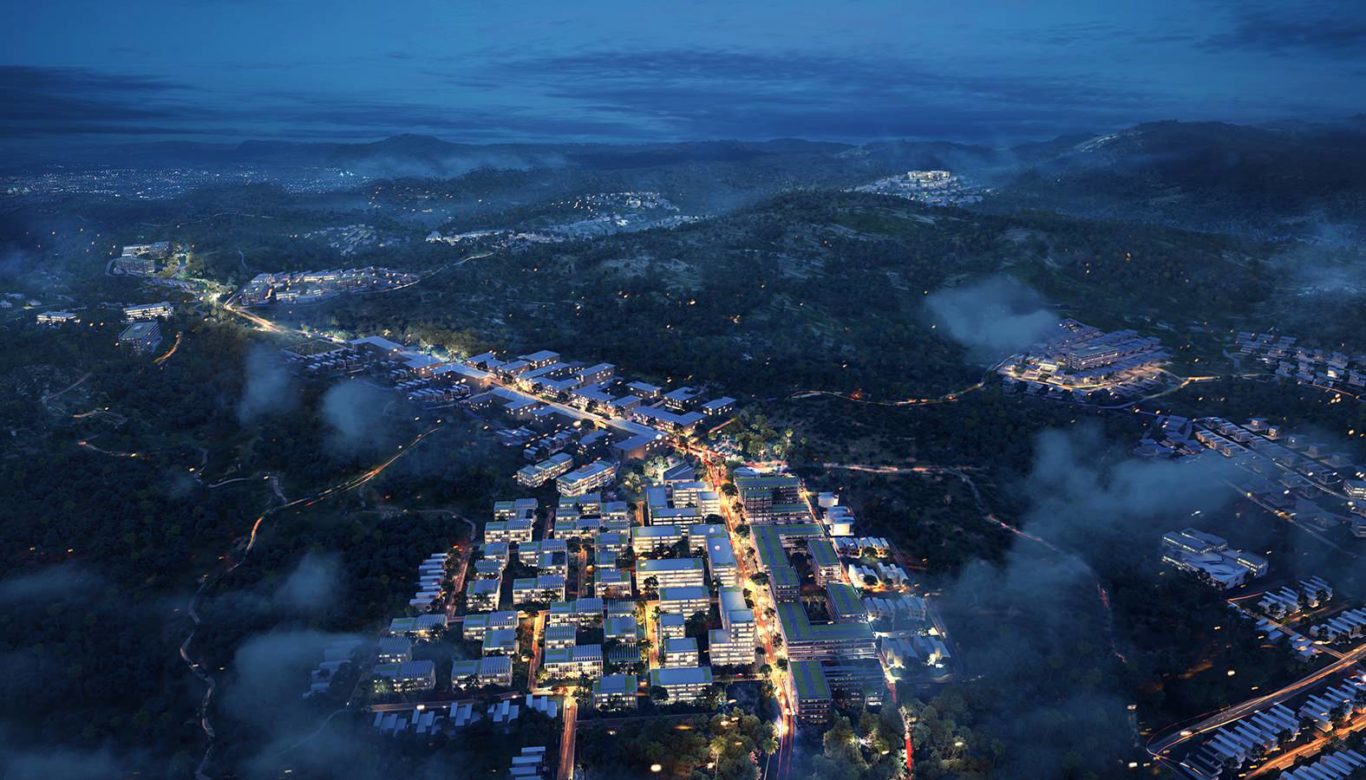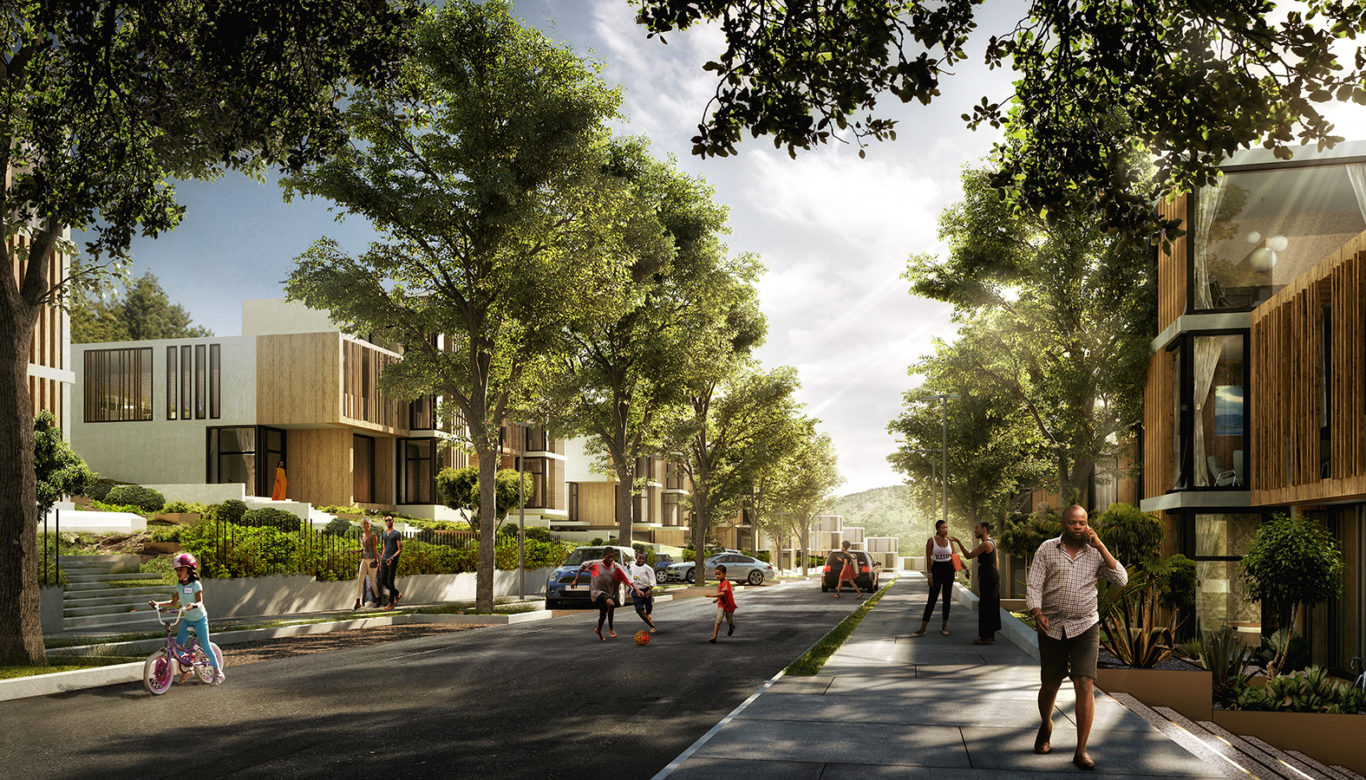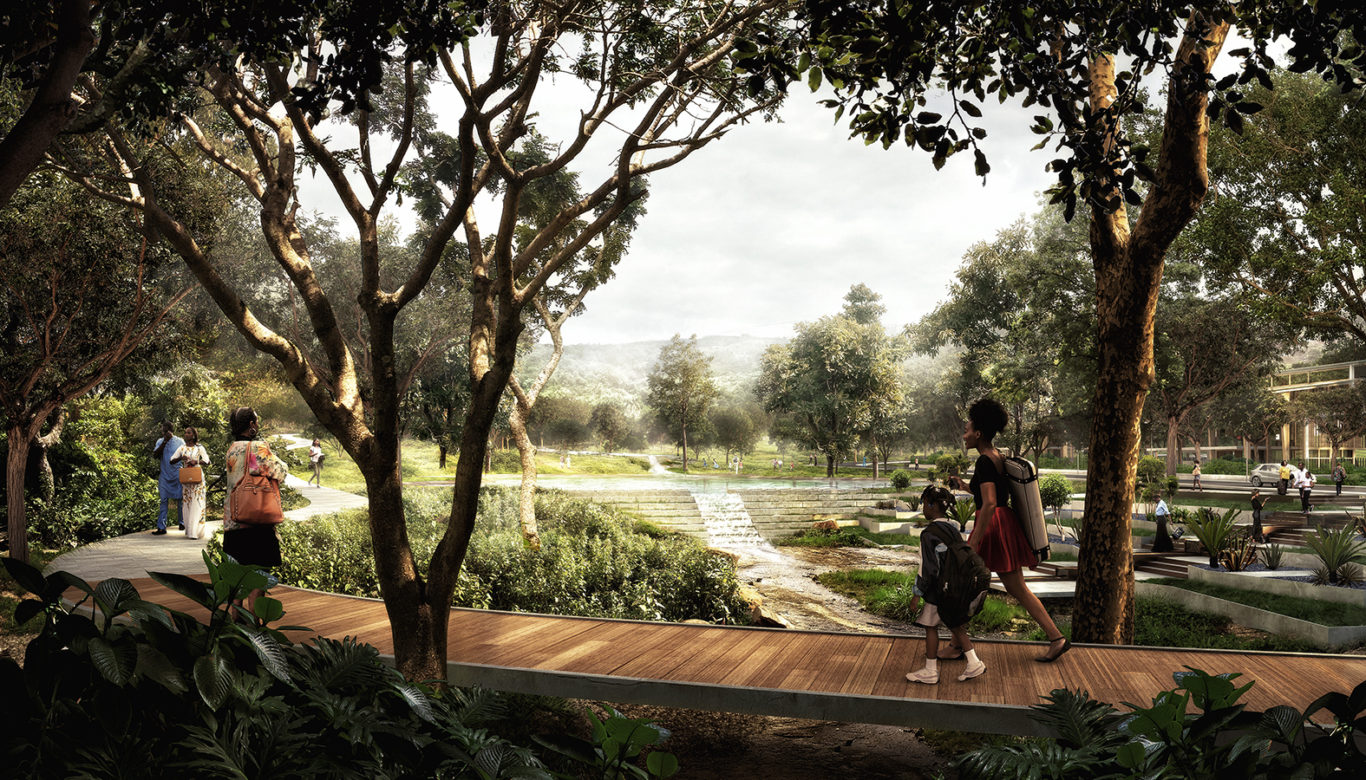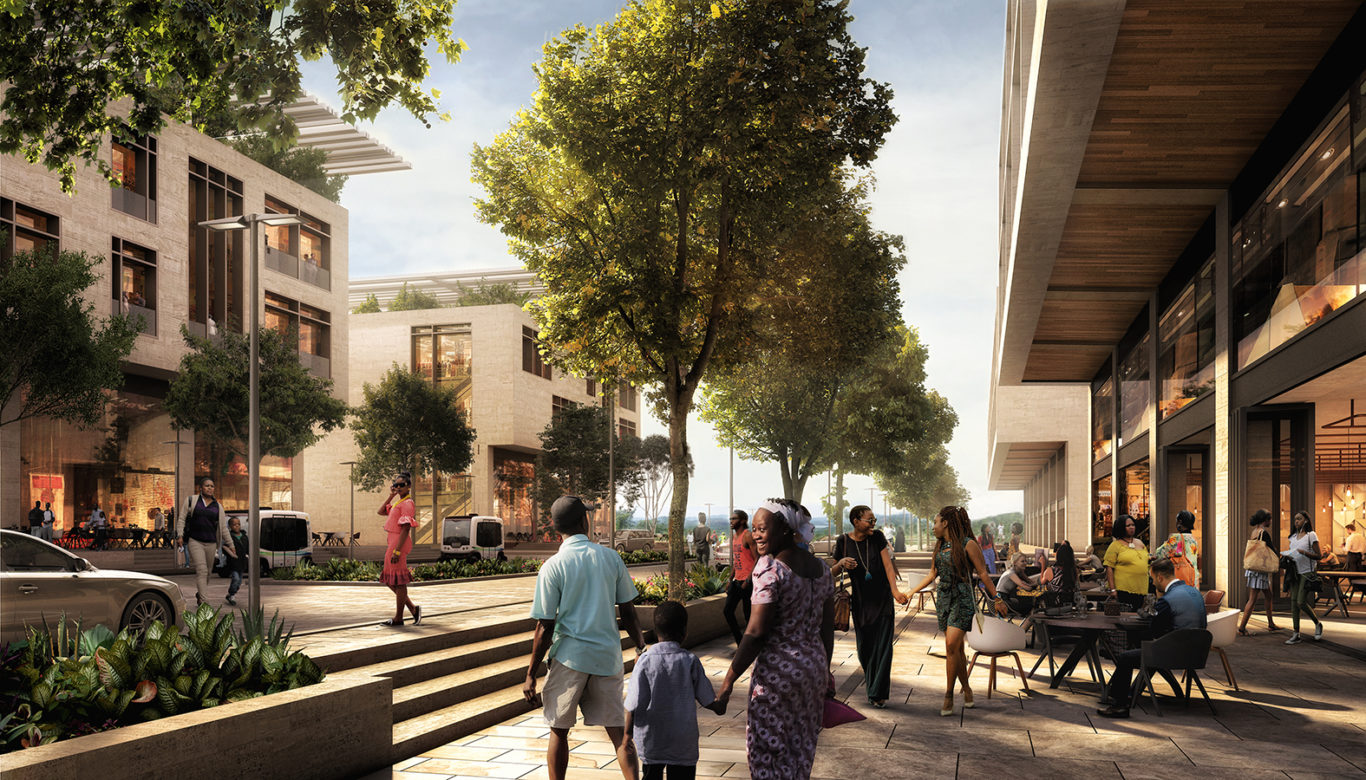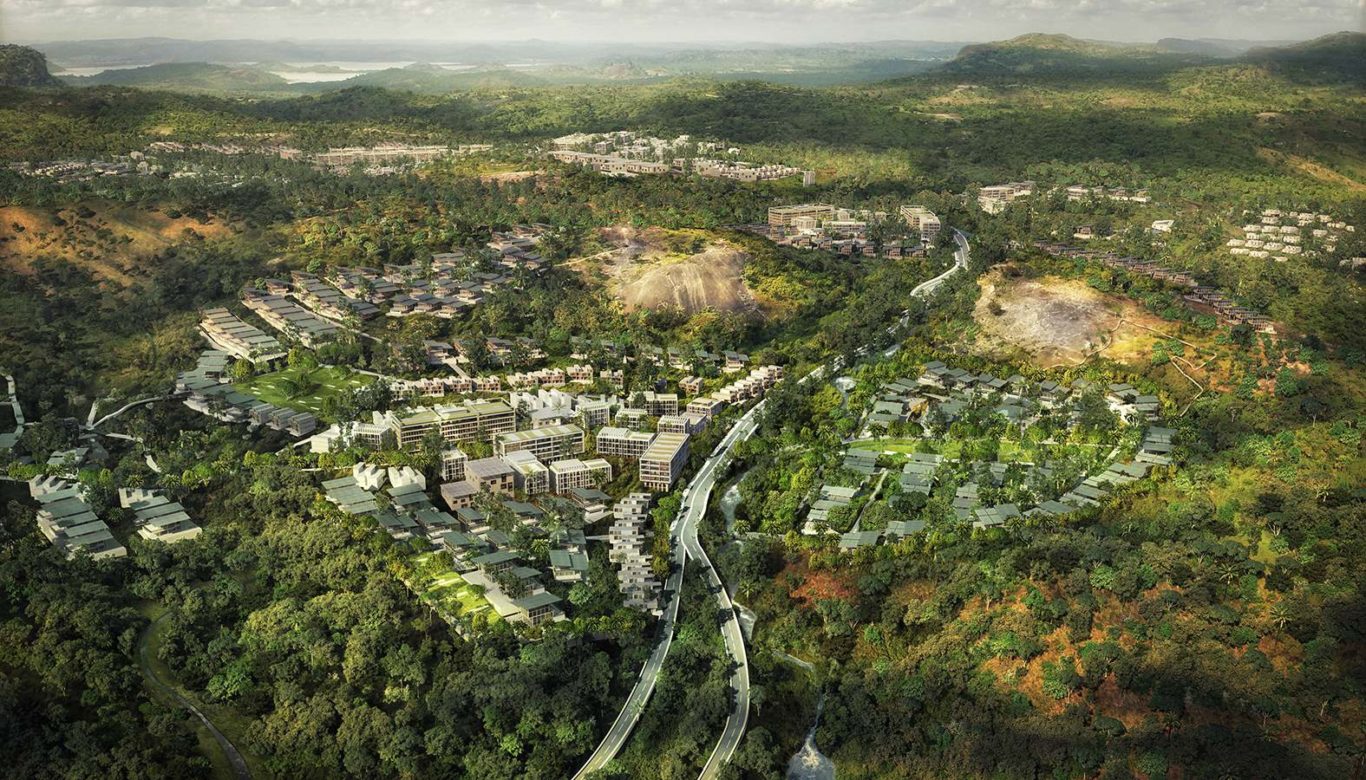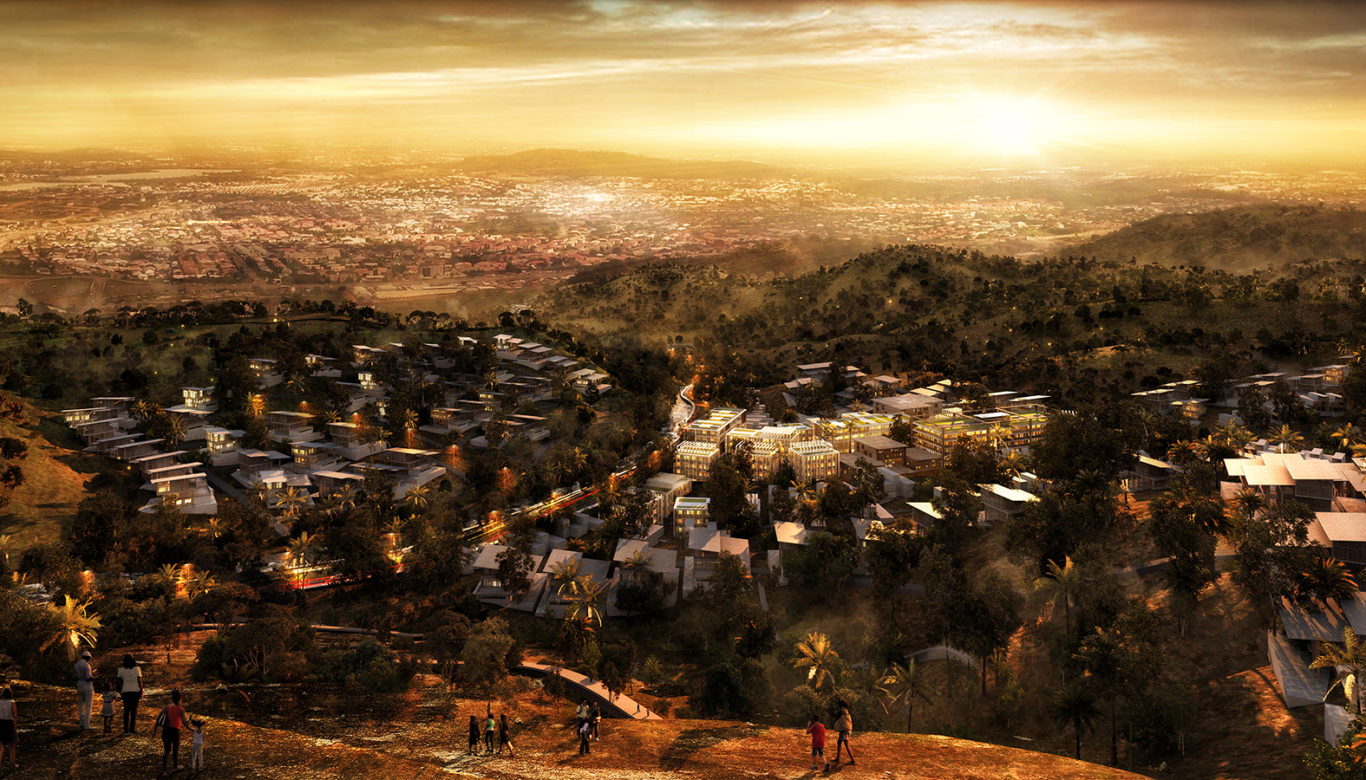SOM’s master plan for Jigna Eco-community addresses the challenges presented by rapid urban growth in Abuja, Nigeria’s capital. Situated on 757 hectares bordering Abuja’s Outer Northern Expressway, a short commute from the city center, Jigna creates a sustainable community that will provide a tranquil urban lifestyle in a visually stunning and ecologically rich location.
The design seeks to protect and enhance the site’s unique natural terrain, situated in the lush green hillsides between the existing city and the Usuma reservoir. The variety of topographic conditions informs the character of each of Jigna’s neighborhoods. Sensitive to the environment, the project provides a model for future urban communities in Africa.
SOM prepared a concept master plan for the site, working alongside a team of local planning and infrastructure consultants with decades of experience in Abuja. The master plan sets out a series of residential communities oriented to take advantage of their particular location. These communities are complemented by a town center that is characterized by a strong and legible urban form, with spectacular views to the north, south and west. Neighborhoods are organized for walkability, defined by a five-minute walking radius to local amenities. The pedestrian-focused design promotes an active lifestyle while reducing vehicle traffic. Each neighborhood contains a mix of uses and building typologies that create varied and vibrant communities.
SOM collaborated with Moriama & Teshima Planners to establish landscape preservation strategies for the delicate ecosystems within and surrounding the site. The team then developed a detailed plan for Phase 1 of Jigna, including a set of overarching design and development guidelines. Intended to inform the future refinement of the project over time, the guidelines promote cohesion and harmony among all phases of development, while providing the flexibility to respond to changes in the marketplace over time.
